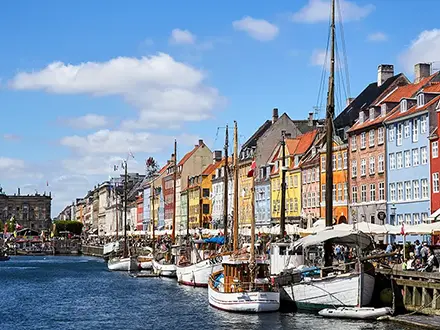
 Denmark
Denmark
- TitleColor: #333333
- DateColor: #999999
- SizeFont: 60
- FlagImg URL: /images/flags/Flag_of_Denmark.svg
- TitleImageSizes: 1900,1440,720
Denmark – Contents
General InformationGeneral Information
About roads, speed limits, mandatory car equipment, and some traffic rule requirements. In the sections below, you can read more detailed information about toll roads, gasoline prices, parking, speed limits, etc.
| no road tolls except for 2 bridges | |
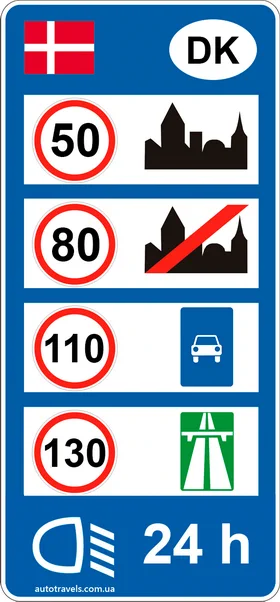 |
urban area – 50 km/h outside urban area – 80 km/h road – 110 km/h motorway – 130 km/h dipped beam is mandatory 24 hours a day |
| maximum blood alcohol level 0.5 ‰ talking on the phone while driving is prohibited |
|
| winter tires are not mandatory but recommended, chains are allowed on snow and ice, studded tires are allowed from October 1 to April 15 |
|
mandatory equipment:
|
|
| seat belts are mandatory for all passengers child seat/booster is mandatory for children up to 135 cm tall |
Toll Roads
Denmark does not have tolls for using its roads. Toll charges apply to the Storebæltsforbindelsen (Great Belt Bridge) and Øresundsbron (Øresund Bridge).
Toll Charges for Bridges in Denmark
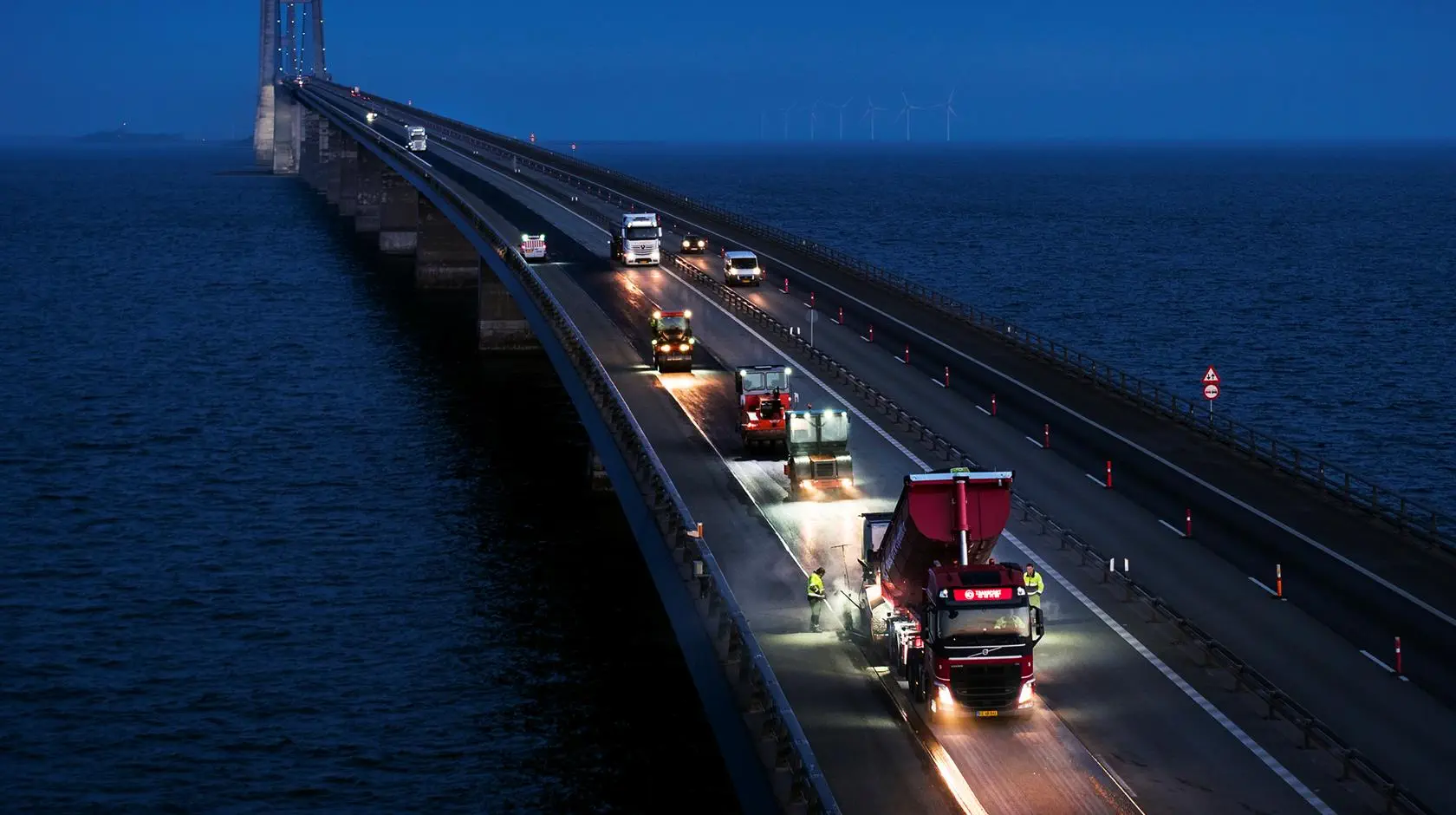
Great Belt Bridge
The Great Belt Bridge (Danish: Storebæltsforbindelsen) is a bridge connecting the Danish islands of Zealand and Funen across the Great Belt. It consists of a suspension bridge for vehicles, a railway tunnel between Zealand and the island of Sprogø, and a bridge between Sprogø and Funen.
Great Belt Bridge on Google Maps
Toll rates for the Great Belt Bridge:
| Vehicle | Toll | |
|---|---|---|
 |
Motorcycles up to 3 m in length | 145 DKK (€ 19) |
| Motorcycles with a trailer up to 6 m | 275 DKK (€ 36) | |
  |
Passenger car up to 3 m | 145 DKK (€ 19) |
| Passenger car (with trailer) from 3 m to 6 m | 275 DKK (€ 36) | |
| Passenger car (with trailer) over 6 m | 420 DKK (€ 56) | |
  |
Minibus (with trailer) up to 6 m Camper up to 6 m and weight up to 3.5 t |
275 DKK (€ 36) |
 |
Minibus (with trailer) over 6 m and height up to 2.7 m | 420 DKK (€ 56) |
  |
Minibus (with trailer) over 6 m and height over 2.7 m Camper up to 10 m and weight over 3.5 t |
620 DKK (€ 83) |
  |
Camper over 10 m and weight over 3.5 t | 985 DKK (€ 132) |
How Your Car's Size is Measured
When you pass through a toll station on the Storebælt Bridge, the size of your vehicle is automatically measured, and then your price is calculated.
The total height and total length are measured.
The price depends on the dimensions of your vehicle measured at the time of crossing.
This means that the measurement of the overall height and overall length of the vehicle includes any additional equipment
you may have installed at the back and top of your car during the crossing. This can include a trailer,
bike rack, roof box, roof rack, towbar, etc., which increases the length or height of the car.
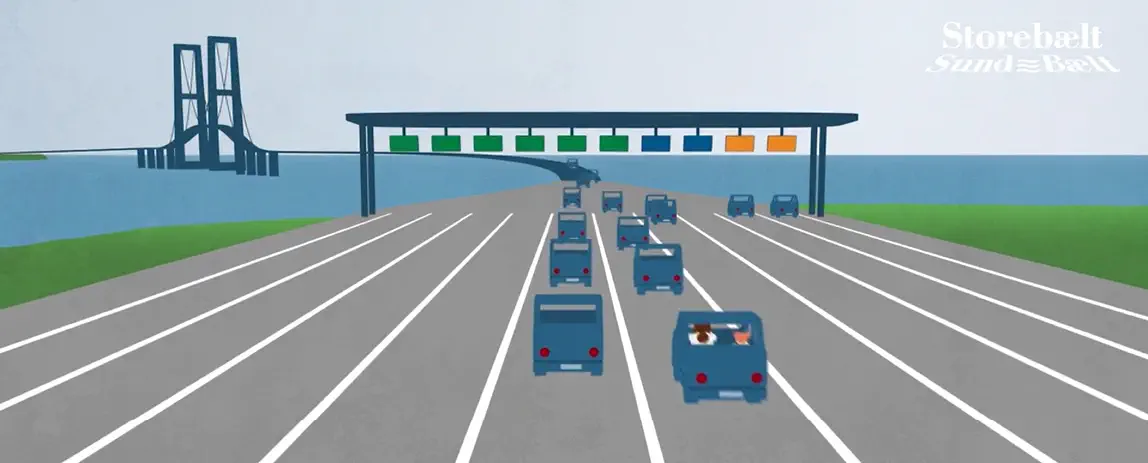
Which Lanes to Use for Crossing
Signs above the toll collection points on the Storebælt Bridge have different colors. This makes it easy to see which lane to choose.
Yellow Lanes
If you want to pay in cash, it is important to select the yellow cash lanes. These are the only lanes where cash can be used.
On this lane, you should use self-service terminals where you insert banknotes and/or coins to pay for your crossing.
Accepts both Danish kroner and euros.
Blue Lanes
If you want to use a credit card, you should select the blue lanes. You can use both Danish and foreign credit cards.
Green Lanes
If you have a bizz payment agreement or license plate agreement, you can use the green express lanes.
This way, you will pass through the toll station quickly. Details about the bizz system can be found on their website https://brobizz.com/en/.
More details and a video on how to pass and pay for tolls can be found on the Great Belt Bridge website.
For more information on rates and bridges, visit the Official Great Belt Bridge website.
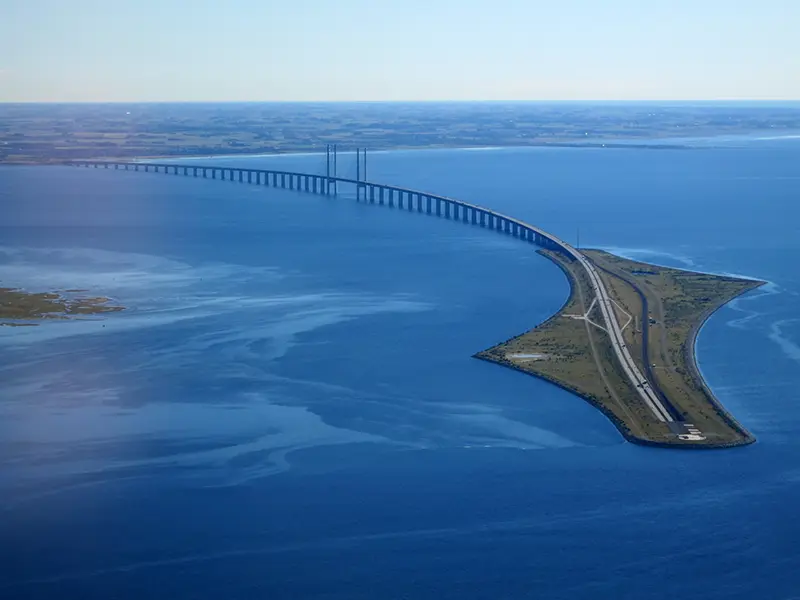
Öresund Bridge
The Öresund Bridge, or Øresund Bridge, is a combined railway and motorway bridge across the Øresund strait, connecting the Danish island of Zealand with the Scandinavian peninsula. Over 60,000 vehicles pass through the bridge daily. The bridge is a popular link between Copenhagen and Malmö.
Important information for crossing the bridge in a Ukrainian car, emergency assistance, or refugees. From March 1, 2022, all passenger cars with Ukrainian plates can cross the Öresund Bridge for free.
Tolls for crossing the Öresund Bridge
| Vehicle Type | Toll | |
|---|---|---|
 |
Motorcycles | 230 DKK €30.85 |
 |
Passenger Car | 455 DKK €61 |
 |
Passenger Car with Trailer | 910 DKK €122 |
 |
Camper (Motorhome) | 910-1600 DKK €122-215 |
More details on toll rates (in English): https://www.oresundsbron.com/en
You can buy tickets online (in English): https://www.oresundsbron.com/en/onlineticket
Payment Methods for Öresund Bridge Toll
Signs at the toll station indicate the way to each lane. You must determine the payment type and vehicle type before entering the toll collection point.
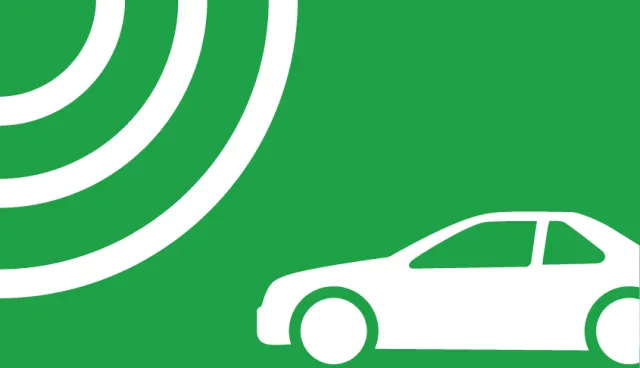 Passenger cars, cars with trailers, campers (motorhomes), motorcycles
Passenger cars, cars with trailers, campers (motorhomes), motorcycles
- Payment by license plate or bizz
- Pay with iTICKET/online ticket with registered license plate
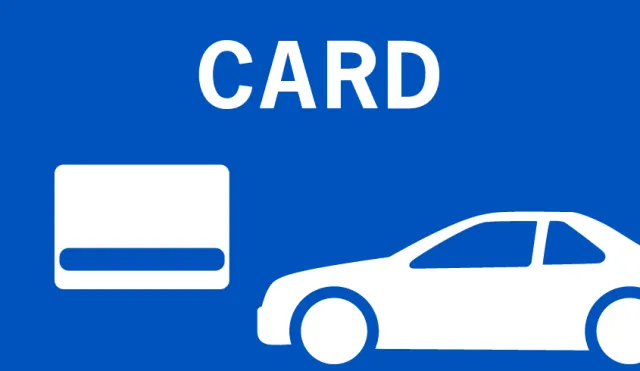 Passenger cars, cars with trailers, campers (motorhomes), motorcycles
Passenger cars, cars with trailers, campers (motorhomes), motorcycles
- Pay by card or iTICKET
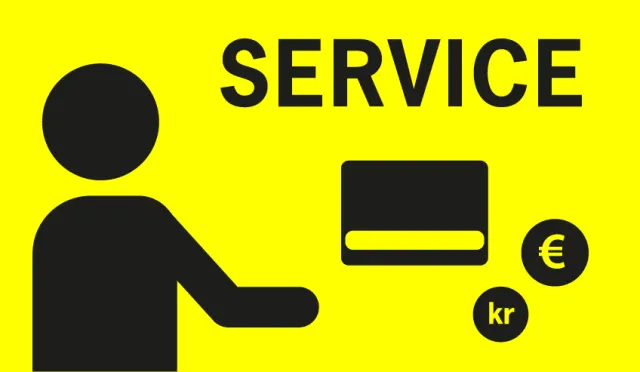 All vehicles
All vehicles
- Cash payment
- Personal assistance required
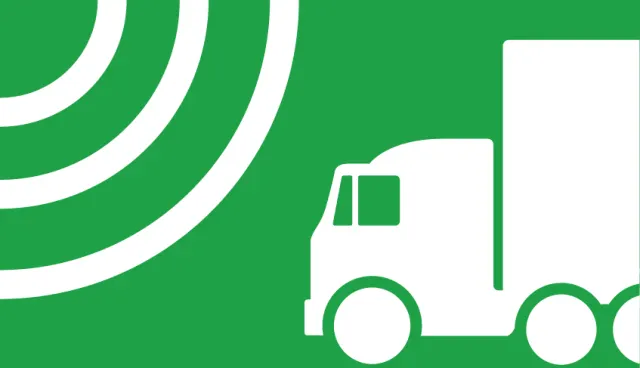 Buses and trucks
Buses and trucks
- Payment by license plate, bizz, or iTICKET
- Card payment without an agreement
Note! All lanes at the toll station are equipped with license plate scanning. This means that if license plate scanning is included in your agreement, it will be scanned, even if you are using a lane designated for manual control. You can always add and remove license plates by logging into your account.
If you entered the wrong lane or do not understand what to do, drive into the yellow lane. Even if you entered the entrance lane incorrectly, drive into the yellow lane at the exit, and assistance will be provided there.
Speed Limits

Standard speed limits in Denmark (unless otherwise indicated on the signs).
Cars and motorcycles:- In urban areas – 50 km/h
- Outside urban areas – 80 km/h
- On a motor road – 110 km/h
- On a motorway – 130 km/h
- In urban areas – 50 km/h
- Outside urban areas – 70 km/h
- On a motor road – 80 km/h
- On a motorway – 80 km/h
The minimum allowed speed on a motorway is not less than 50 km/h.
Dipped Headlights
Use of dipped headlights is mandatory 24 hours a day throughout the year.
Cost of Petrol in Denmark
Parking in Denmark
Street Parking in Copenhagen
Public parking is available throughout Copenhagen, but in some areas of the city, you need to pay for parking or adhere to time restrictions.
The center of Copenhagen is divided into tariff zones and restricted time zones. The farther from the city center, the cheaper it is to leave your car.
Outside the paid parking zone, parking is free, but there may be time restrictions. Always check the signs on the street.
Free Parking on Sundays and Public Holidays
Parking is free on weekends from Saturday at 5 PM to Monday at 8 AM, as well as on Constitution Day (June 5),
Christmas Eve, Christmas Day, Easter, and other public holidays.
If a time limit is indicated under the P sign, you need to use a parking disc. Set the disc to indicate the time of your arrival.
| Time | Red Zone | Green Zone | Blue Zone | Yellow Zone |
|---|---|---|---|---|
| Day (08:00-18:00) | 43 DKK, € 5.77 | 25 DKK, € 3.35 | 16 DKK, € 2.15 | 12 DKK, € 1.61 |
| Evening (18:00-23:00) | 17 DKK, € 2.28 | 17 DKK, € 2.28 | 17 DKK, € 2.28 | 12 DKK, € 1.61 |
| Night (23:00-08:00) | 6 DKK, € 0.8 | 6 DKK, € 0.8 | 6 DKK, € 0.8 | 6 DKK, € 0.8 |
| Sat 17:00 - Mon 08:00 | 0 | 0 | 0 | 0 |
Current rates for street parking in Copenhagen: www.kk.dk
Mobile apps for paying parking in Copenhagen: https://international.kk.dk/
Details about parking in Copenhagen on the city's website: https://international.kk.dk/
Mandatory Equipment
Equipment required to have in the car:| Emergency stop sign |
| First aid kit | |
| Fire extinguisher | |
| Reflective vest |
Winter Tires, Studded Tires, Chains
| The use of winter tires is not mandatory in Denmark, but it is recommended to install them in low temperatures. The tread depth of the tires should be at least 3 mm in the winter season and 1.6 mm in the summer season, regardless of the tire type. | |
| Chains are allowed only if the road is completely covered with snow or ice. | |
| Studded tires are allowed from October 1 to April 15. They must be installed on all wheels. There are no speed restrictions for vehicles equipped with studded tires. |
 travels
travels Albania
Albania Andorra
Andorra Austria
Austria Azerbaijan
Azerbaijan Belarus
Belarus Belgium
Belgium Bosnia and Herzegovina
Bosnia and Herzegovina Bulgaria
Bulgaria Croatia
Croatia Cyprus
Cyprus Czech Republic
Czech Republic Estonia
Estonia Finland
Finland France
France Georgia
Georgia Germany
Germany Greece
Greece Hungary
Hungary Iceland
Iceland Ireland
Ireland Italy
Italy Kosovo
Kosovo Latvia
Latvia Liechtenstein
Liechtenstein Lithuania
Lithuania Luxembourg
Luxembourg Malta
Malta Moldova
Moldova Monaco
Monaco Montenegro
Montenegro Netherlands
Netherlands North Macedonia
North Macedonia Norway
Norway Poland
Poland Portugal
Portugal Romania
Romania Russia
Russia San Marino
San Marino Serbia
Serbia Slovakia
Slovakia Slovenia
Slovenia Spain
Spain Sweden
Sweden Switzerland
Switzerland Turkey
Turkey Ukraine
Ukraine United Kingdom
United Kingdom